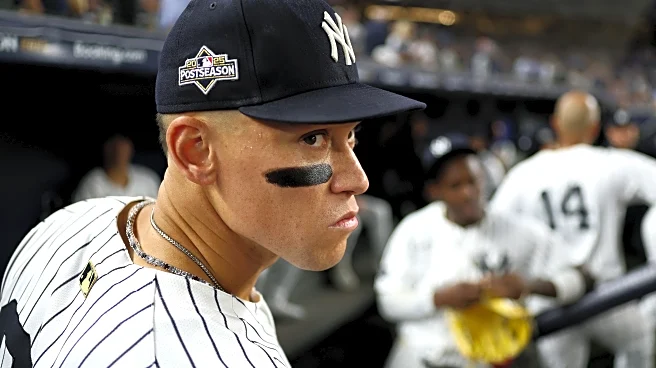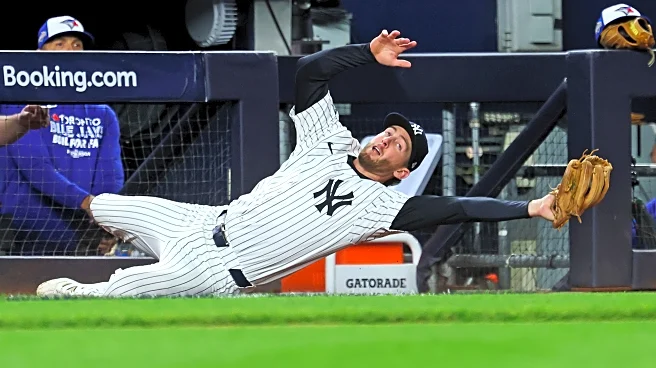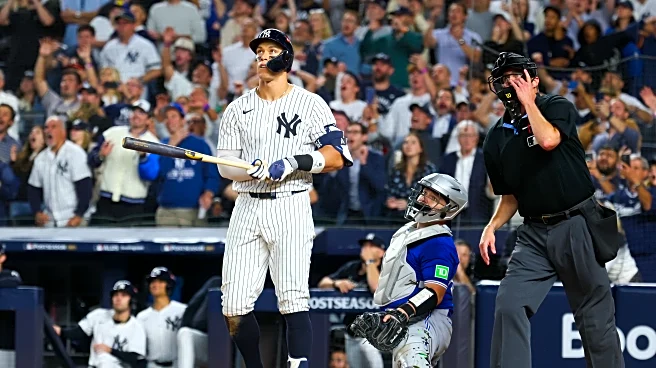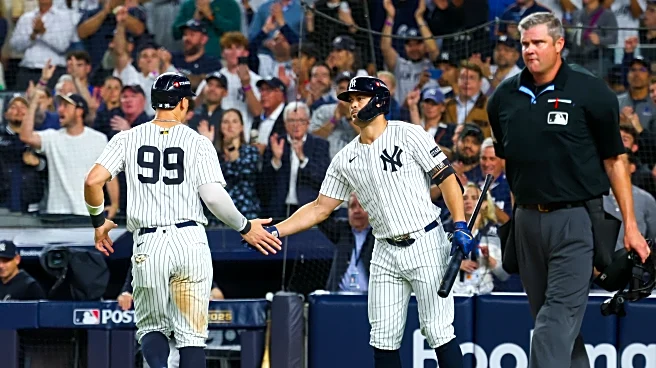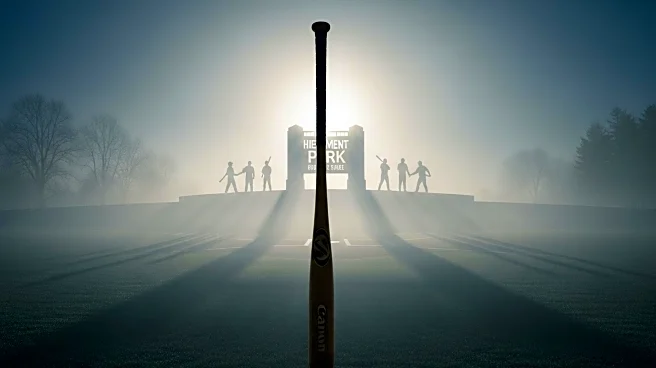Alas, the renewed hope provided by the Yankees’ comeback win in Game 3 of the ALDS proved a mirage, the Blue Jays eliminating the Bombers at Yankee Stadium in Game 4. To be fair, you cannot expect to advance
when you score three runs total across two out of the four games — an offensive no-show that would have surely prevented any chance of making noise in later rounds even if they had advanced. At least we will always have the excitement of that Game 3 comeback to remember this season by.
Aaron Judge was the catalyst of that comeback, providing a pair of moments equally deserving of AB of the Week. We begin our breakdown in the third inning, the Yankees staring down a 6-1 deficit after allowing four runs in the top-half of the frame. It is so important to respond immediately after the other team scores, if only to prevent a negative mindset from taking hold. Trent Grisham began that process by leading off with a double, bringing Judge to the plate with a running position and no outs, Judge already having singled off Shane Bieber in the first.
Judge saw two four-seam fastballs in his first AB, the second he lined for a single, so it is a safe bet that he is not going to see another heater in this encounter. Indeed, Bieber starts him off with a first-pitch slider, Alejandro Kirk setting a target low and away.
Boy did Bieber get lucky here. This is the definition of a cement mixer, the slider backing up right down the middle. Unfortunately, Judge is unable to punish the mistake and fouls it back to the screen.
After dodging a bullet with that previous mistake slider, it is no surprise that Bieber immediately switches to something else. He opts for the slower, more downward breaking knuckle curve hoping the difference in velocity and movement will extract a whiff from Judge.
This is a much better executed breaking ball from Bieber, the pitch looking like a strike for a long time before falling off the table. Judge just nicks a piece of the top of the ball, sending it skittering to the backstop.
Bieber is in the driver’s seat with the count 0-2. He’s gotten two straight swings on breaking balls from Judge so now he has an opening to see if he can get Judge to chase one out of the zone.
This is the best pitch Bieber has thrown Judge all game, nailing his spot just below the zone with the low and away slider. I have no idea how Judge was able to hold up against this pitch that easily could have been called a strike — he must have read the spin immediately out of Bieber’s hand to spit on it like he did.
Even though he didn’t get the call or the swing he was looking for on the previous pitch, all Bieber has to do is replicate its execution to give both Judge and the umpire a very difficult split second decision.
Instead, he spikes this slider into the dirt for the easiest take Judge has had in the game.
It looks like the awful execution of that slider has scared Bieber off the pitch, because he switches things up to the first changeup of the AB.
Bieber misses his spot and leaves the off-speed pitch up, though still well inside off the plate. However, Judge is ready for it and beats the pitch to the spot, lining a one-hopper off the wall in left for a double to plate Grisham for the Yankees’ second run.
Here’s the full AB:

New York ended up scoring a pair in the frame. They didn’t have to complete the comeback all in one go — the beauty of reducing the deficit immediately after the Blue Jays scored was that it breathed new life into a crowd that had the wind taken out of its sails, providing energy that would fuel their rally the following frame.
This time, Judge steps into the box with runners on first and second and one out after Austin Wells reached on an error and Grisham drew a walk to knock reliever Mason Fluharty from the contest. That means the flame throwing converted reliever Louis Varland is set to reprise his role as the Blue Jays’ fireman. Everyone in the stadium expects Varland to attack Judge with one of his triple digits fastballs.
Everyone, that is, except for Judge. Varland looks to freeze Judge by dropping in a first-pitch curveball. Judge reads the pitch but is a little early with his swing and yanks it foul toward the visitors’ dugout.
Now that he has shown Judge his slowest pitch, Varland hopes that he has lagged his bat enough to now throw the gas by him.
Varland dares Judge to hit this 100 mph four-seamer, throwing it center cut as if to say, “Here’s my best fastball, see if you can catch up with it.” Judge cannot catch up and whiffs late and underneath the pitch.
Just like in the previous inning, Judge finds himself in a hole, 0-2. After he was late swinging through the prior fastball, he has to remain geared up for another heater and hope he can react to breaking/off-speed.
It’s the heater he gets and man oh man was he ready for it. Absurd does not do justice to the feat he just pulled off. In fact, this is the only time during the pitch tracking era that a hitter has hit a pitch 99 mph or faster this far inside for a home run. This spot felt eerily similar to when Varland struck out Giancarlo Stanton to strand the bases loaded in Game 1, but this time it was the Yankees who won the moment. It is the biggest swing of Judge’s life and certainly of the Yankees’ season, New York roaring back from a 6-1 deficit to tie the game, 6-6.
Here’s the full AB:

The narrative that has followed Judge since his ascension to being the best hitter in baseball concerns his lack of impactful performances in the postseason. Even this year, with Judge batting .500 in the postseason, many of those hits are regarded as empty calories, none coming in big moments or with runners in scoring position. Tuesday night, Judge took a huge step toward turning that narrative on its head as he almost single-handedly powered the comeback to keep the season alive. The season might have ended much earlier than all those involved would have hoped, but Judge can finally hold his head high for his performances this October.

